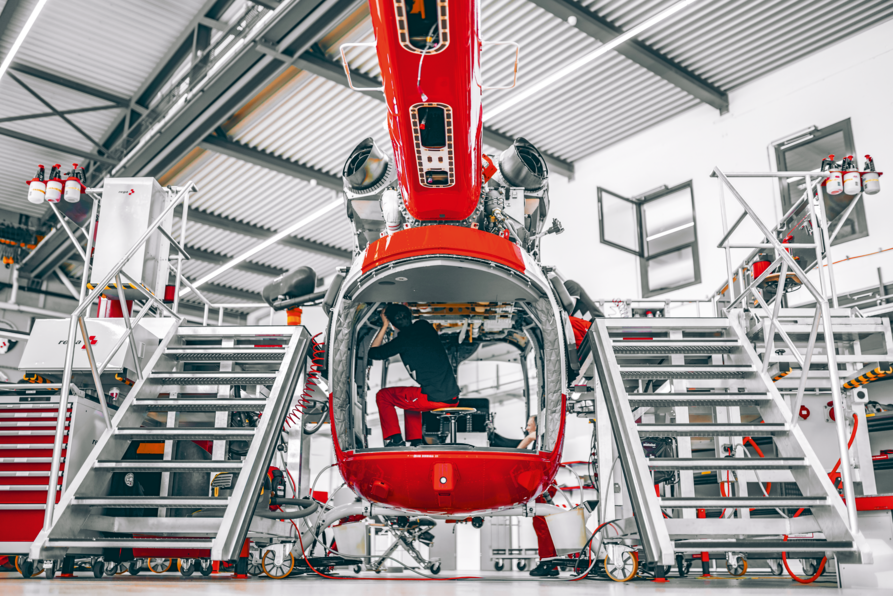Meticulous planning is required to ensure that the detailed specifications for the maintenance of the jets and helicopters are complied with at all times, but that the fleet still remains fully operational. The primary objective is to keep the downtimes in the hangar to an absolute minimum while at the same time ensuring maximum safety and quality, so that the aircraft are ready for action again as soon as possible. The procedure for performing the maintenance activities is as follows:
1. The annual plan
The two Nominated Persons Continuing Airworthiness each draw up an annual plan containing all the scheduled maintenance tasks for the 20 helicopters and three ambulance jets. On paper, the time sequence is clear: maintenance is prescribed after a certain number of flying hours or months. With the Airbus Helicopters H145 helicopters, for example, this is the case after every 400 flying hours or 12 months, and with the AgustaWestland Da Vinci helicopters after every 200 flying hours or 6 months. The specifications must be strictly complied with. However, if Rega flies many missions, the maintenance intervals are shorter and the planning schedule has to be modified. Unexpected defects and crew training also need to be taken into account.
A minor periodic inspection on the Da Vinci helicopter, for instance, takes around seven days and on the ambulance jet about five days. In contrast, a complex check, such as that conducted on the Rega jets every four years, lasts between one and two months.
2. The work package
Based on the annual plan, the fleet manager responsible draws up a work package, comprising the documents with all the detailed information relating to the aircraft maintenance. This work package is created about three weeks before the actual maintenance event, so that the logisticians in the warehouse can supply the required material. The work package is subsequently passed on to the supervisor, who guides the maintenance team through the maintenance event and is responsible for the entire process.
3. The maintenance of the ambulance jets
After every repatriation mission, the Rega ambulance jets return to the hangar at the Rega Centre. The jet mechanics therefore see them almost every day and so are very familiar with the condition of the aircraft. They are also in close contact with the jet pilots; consequently, they are always well informed and
can rectify minor problems or faults immediately.
4. The maintenance of the helicopters
The rescue helicopters make their way to the hangar at the Rega Centre less frequently. When they are flown from a helicopter base to the Rega Centre for maintenance, after landing the mechanics perform an incoming check. On the ground, they check the running engines and all the systems, record the parameters
and visually inspect the helicopter for damage. Any deviations or defects are dealt with as quickly as possible.
5. The final check
After the mechanics have maintained and inspected the helicopter or jet as specified in the work package, the supervisor scrutinises the work that has been carried out. In the case of the helicopter, this is followed by a ground run and a technical check flight. During this flight, the helicopter mechanic accompanies the Rega works pilot and together they check all the systems and measure the vibrations on the rotor system. Subsequently, the rescue hoist is checked to make sure it is fully functional. The hoist cable is fully extended and retracted and also tested with weights in the course of a check flight.
The jet mechanics can start the engines themselves, power up the systems and check them. While a pilot is not necessary for this, the mechanics need an additional licence to perform this task.
6. Back in operation
Once the work and all the necessary checks have been successfully completed, a supervisor releases the helicopter or jet for return to service. The aircraft is now ready to be deployed again and can take off on missions once more.

